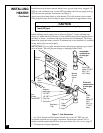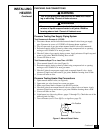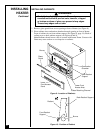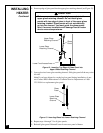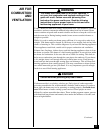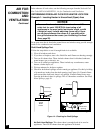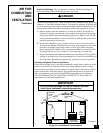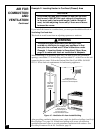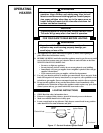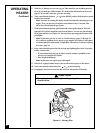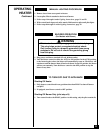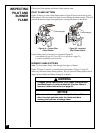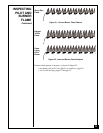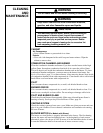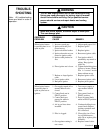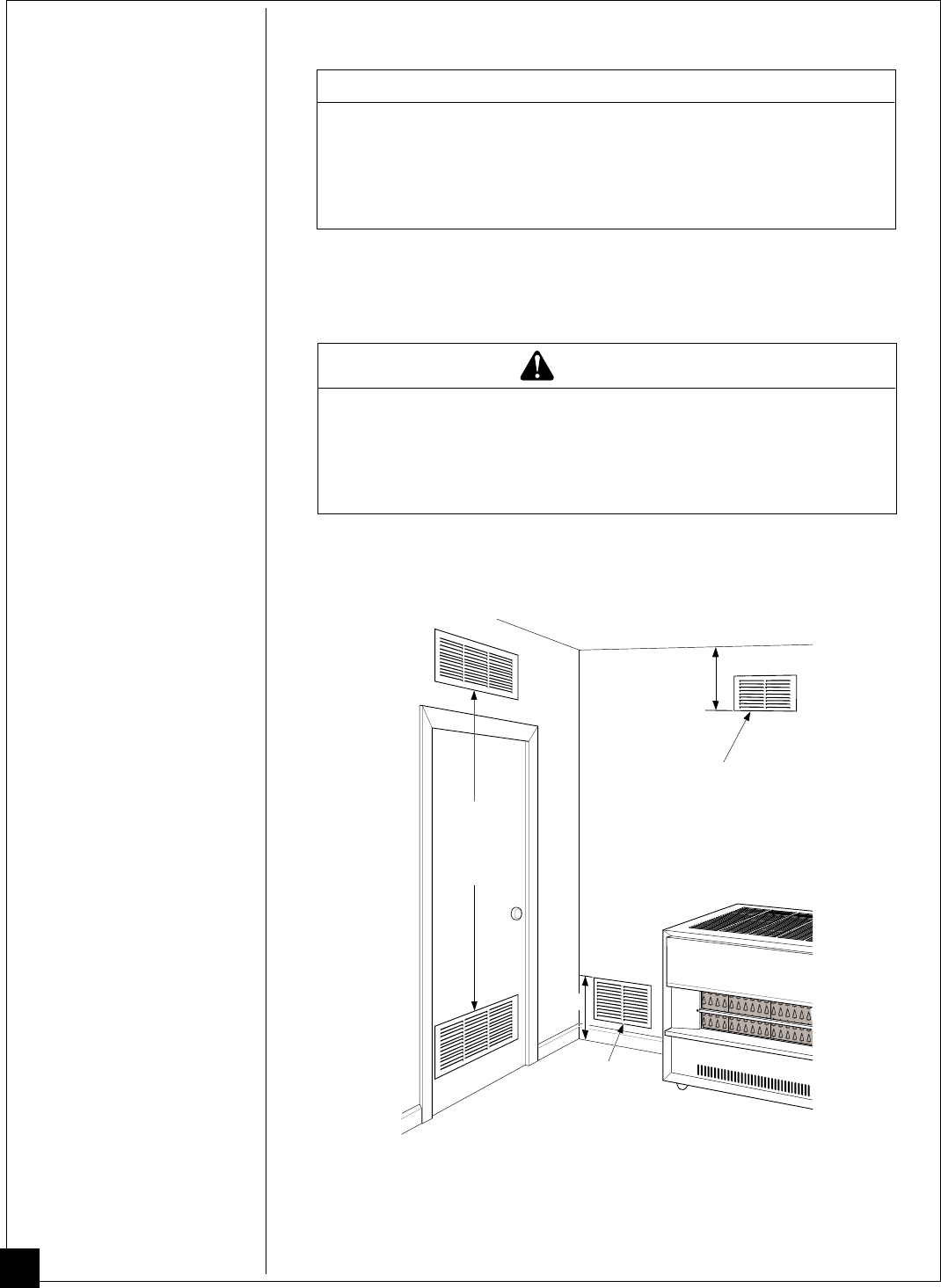
20
100792
AIR FOR
COMBUSTION
AND
VENTILATION
Continued
After providing ventilation between rooms, check for draft hood spillage (see Draft
Hood Spillage Test, page 18). If draft hood spillage still occurs, provide more
ventilation between rooms or provide permanent ventilation from outdoors. See
Providing Permanent Fresh-Air Ventilation, page 19.
Figure 16 - Ventilation Air from Inside Building
Example 2: Locating Heater in Confined (Closed) Area
NOTICE
A confined area has an air volume of less than 50 cubic
feet for each 1000 BTU/Hr input rating of all appliances
in the area (cubic feet equals length x width x height of
area). Include adjoining rooms only if there are no doors
between the rooms.
If you install this heater in a confined area, you must provide additional fresh air.
Ventilating Confined Area
This fresh air would come from an adjoining open area or outdoors.
WARNING ICON G001
WARNING
The adjoining open area must have enough fresh,
outside air ventilation to supply any appliance in that
area plus the confined area. Follow instructions under
Example 1: Locating Heater in Unconfined (Open) Area,
page 18 to make sure fresh air ventilation is adequate.
When ventilating to an adjoining open area, you must provide two permanent
openings: one within 12" of the ceiling and one within 12" of the floor on the wall
connecting the two areas. Follow the National Fuel Gas Code NFPA 54/ANSI
Z223.1. It lists fresh-air requirements for fuel-burning appliances.
Ventilation
Grills into
Closet for
Hot Water
Heater
Recommended
Fresh Air Duct
into Crawl Space in
Furnace Area or in
Closet with Water Heater
Ventilation Grills
Connecting Two Rooms
to Meet Unconfined Space
12"
12"



